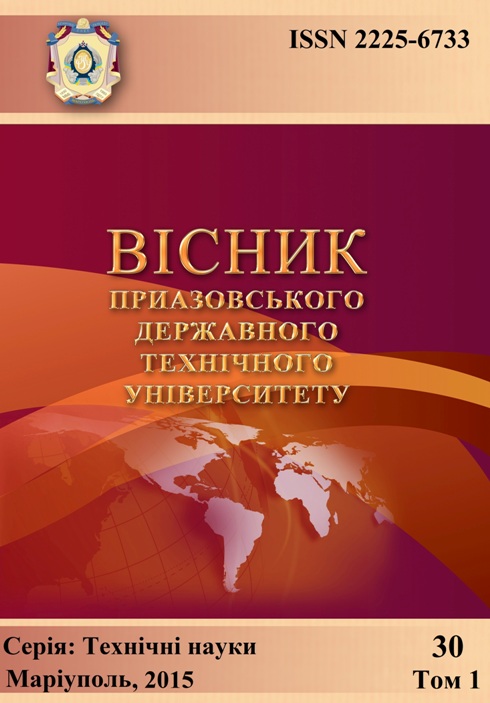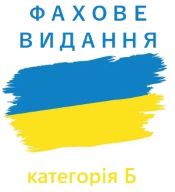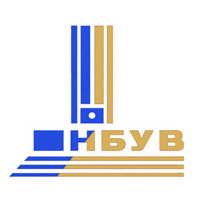Рівень нерівноважності структури затверділих проб сталі, відібраних під час ії плавки у дугової електропечі
DOI:
https://doi.org/10.31498/2225-6733.30.2015.52164Ключові слова:
проби металу, рідка сталь, спадкова структура твердого металу, мікронеоднорідність структури, ферит, перлітАнотація
Проби металу відбирали по ходу плавки маловуглецевої сталі в дуговій електропечі і аналізували затверділий сплав на утримання фериту і перліту. Знайдено, що зміст фериту в затверділої пробі, як правило, відхиляється від рівноважного, особливо на початку плавки. Наприкінці плавки його зміст стабілізується і становить 0,91-0,93 частки рівноважного. Досягнення в кінці плавки температури рівноважної мікронеоднорідності розплаву призводить до зменшення браку затверділого металуПосилання
Яценко А.И. Структурно-концентрационные особенности δ(α)→γ-превращения в низкоуглеродистых сталях / А.И. Яценко, К.Ю. Доронкин, П.Д. Гришко // Металловедение и термическая обработка металлов. – 1986. – №7. – С. 18-20.
Яценко А.И. Концентрационно-структурная микронеоднородность низколегированных листовых сталей / А.И. Яценко, Г.В. Левченко, П.Д. Грушко // Сталь. – 1990. – №5. – С. 78-82.
Жидкая сталь / Б.А. Баум [и др.]. – М.: Металлургия, 1991. – 158 с.
Скребцов А.М. Особенности структурных превращений металлических расплавов в интервале температур ликвидус-кипения / А.М. Скребцов // Сталь. – 2010. – №10. – С. 14-19.
Влияние температуры нагрева жидкого алюминиевого сплава на микроструктуру затвердевшего металла / А.М. Скребцов, Г.А. Иванов, Ю.Д. Кузмин, А.С. Качиков, Е.В. Золотарева // Вісник Приазовського державного технічного університету. Сер. : Технічні науки : Зб. наук. пр. / ПДТУ. – Маріуполь. 2011. – Вип. 23. – С. 138-142.
Крамаров А.В. Производство стали в электропечах / А.В. Крамаров. – М.: Металлургиздат. – 1969. – 440 с.
Гуляев А.П. Металловедение / А.П. Гуляев. – М.: Металлургия. 1986. – 542 с.
Непрерывный контроль температур жидкой стали в период доводки мартеновской печи / В.С. Кочо, Г.В. Самсонов, А.Г. Стрельченко, П.С. Кислый. – Киев: Техника. – 1965. – 228 с.
Еланский Г.Н. Строение и свойства жидкого металла – технология плавки – качество стали / Г.Н. Еланский, В.А. Кудрин. – М.: Металлургия. – 1984. – 239 с.
Ефимов В.А. Стальной слиток / В.А. Ефимов. – М.: Металлургиздат. – 1961. – 356 с.
Ефимов В.А. Разливка и кристаллизация стали / В.А. Ефимов. – М.: Металлургиздат. – 1976. – 552 с.
Процессы непрерывной разливки / А.Н. Смирнов, В.А. Пилюшенко, А.А. Минаев, С.В, Момот, Ю.Н. Белобров. – Донецк: ДОННТУ, 2002. – 536 с.
Филиппов Е.С. Строение, физика и химия металлургических расплавов / Е.С. Филиппов. – М.: Металлургиздат. – 1995. – 304 с.
##submission.downloads##
Як цитувати
Номер
Розділ
Ліцензія
Журнал "Вісник Приазовського державного технічного університету. Серія: Технічні науки" видається під ліцензією СС-BY (Ліцензія «Із зазначенням авторства»).
Дана ліцензія дозволяє поширювати, редагувати, поправляти і брати твір за основу для похідних навіть на комерційній основі із зазначенням авторства. Це найзручніша з усіх пропонованих ліцензій. Рекомендується для максимального поширення і використання неліцензійних матеріалів.
Автори, які публікуються в цьому журналі, погоджуються з наступними умовами:
1. Автори залишають за собою право на авторство своєї роботи та передають журналу право першої публікації цієї роботи на умовах ліцензії Creative Commons Attribution License, яка дозволяє іншим особам вільно розповсюджувати опубліковану роботу з обов'язковим посиланням на авторів оригінальної роботи та першу публікацію роботи в цьому журналі.
2. Автори мають право укладати самостійні додаткові угоди, які стосуються неексклюзивного поширення роботи в тому вигляді, в якому вона була опублікована цим журналом (наприклад, розміщувати роботу в електронному сховищі установи або публікувати у складі монографії), за умови збереження посилання на першу публікацію роботи в цьому журналі.









